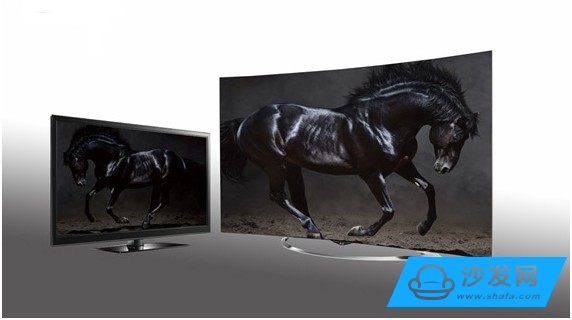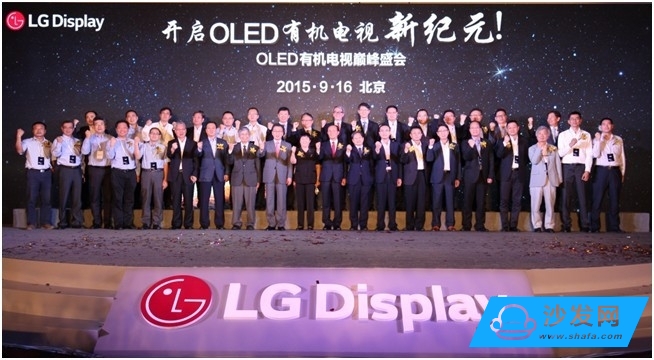The color TV industry in 2015 was not very good. Under the influence of Internet TV impact and the industry bottleneck being unresolved, major TV manufacturers transformed themselves to solve the difficulties of the winter. Some manufacturers choose to introduce new content, while others choose to explore a new road and hope to usher in a complete revolution in the television industry. In the competition of many display technologies, OLEDs have been highly hoped by more and more people, and the entire industry is attracting attention.
In fact, today's LCD display technology is so mature today. Why does the industry have to change and make great efforts to find alternatives? This is because with the development of the times, people not only have higher demands on the display quality, they are no longer content to sit in front of the TV and are more willing to see the physical appearance of the TV terminal. The transformation. I believe that most consumers have not thought that there will be thinner than the bank card wallpaper TV, there will not be able to bend, carry flexible display ... and OLED is a future display technology with a variety of application scenarios This is an important factor for OLED to stand out in the transition of the TV industry.

OLED TV (right) is better than LCD in image quality and black performance (left)
The trend of the times, signs of the rise of OLED
In 2015, Skyworth and Konka, two giants of China's color TV industry, took the lead in announcing the start of or soon to mass production of 4K OLED TVs. It is worth noting that mass production also means that the price is falling. Compared to the price range of 50,000-60,000 years ago, the price of domestically-made large-size 4K OLED TVs has already been within 30,000 yuan, which is for many high-end consumers. There is no pressure. In addition, Skyworth held the “China OLED Future Product Summit Forum†at the end of the year, inviting delegates from government, business, and academics to participate in the event, which will bring OLED to a climax.
In addition to television manufacturers began to have a big move, South Korean panel maker LG Display, which has been actively promoting OLED technology, has spared no effort to develop the OLED industry. In September, LG Display held the OLED summit, LG Display united LG Electronics, Skyworth, Konka, Changhong, Haier, Suning, Gome and other nearly 30 color TV industry upstream and downstream industrial chain and research institutions to create "OLED market camp expansion." This greatly accelerated the popularity of OLED TVs. In addition, there are also reports that LG Display plans to invest 8.7 billion US dollars to establish the world's largest OLED research and development plant, plus large-size OLED screen. As a result, OLED production capacity will rise in a straight line, and at the same time, 80% of the good product rate can also ensure the rapid growth of OLED TV consumer demand.
According to a report released by DisplaySearch, a market research organization, it is expected that the OLED market will grow at a CAGR of 93.4% during 2015-2019. As a complete machine manufacturer, Skyworth also stated that in 2016, only Skyworth's OLED TV sales could increase by 10 times. By 2019, OLED products will replace LCD TVs and become mainstream in the color TV market. This also means that the star fire of OLED has finally become the trend of Liaoyuan, leading the development of the TV industry.

OLED Organic TV Summit held in Beijing
Not limited to the TV industry, OLED will have a brighter future
In fact, the rise of OLED has some truth. In the television industry, CRT is regarded as the first generation of TV display technology, LCD is regarded as the second generation technology, and in the eyes of more people, OLED will be the third generation display technology that leads the industry transformation. Deng Qingyun, the “Father of OLED,†once stated that LCD panels require a backlight source and there is a risk of light leakage, but OLEDs do not have a backlight source and can emit light automatically. And in terms of molecular mobility, LCD panels are slower, but OLEDs are faster. Therefore, OLED display technology has many advantages. For example, the pixel is completely closed and presents pure black, vivid colors, ultra-high contrast, and extremely fast response. In the eyes of Dr. Deng Qingyun, OLED is the only display technology that can be proven to be able to restore images perfectly. From this point of view, it is also reasonable for OLED to achieve an adverse market growth.
It is worth noting that OLED is not limited to the TV industry. In fact, OLED technology has long been used in small-sized electronic devices such as smart watches and mobile phones. Today, with the development of technology, large-size OLEDs have also made breakthroughs. Also based on the advantages brought by self-luminescence, the OLED screen can not only achieve the ultra-thin and ultra-thin within 1mm, but also can realize future display forms such as curling, folding, transparent, and double-sided display. In theory, OLED screens can be attached to the surface of any transparent or irregular object to create a "display everywhere" future world. The future of OLED applications is very attractive.

OLED future application scenario
For the future trend of OLED, Hao Yabin, vice president and secretary-general of China Electronic Video Industry Association, also expressed a positive attitude. He believes that the current OLED with independent self-luminous properties and flexible material can be curled, representing the direction of color TV progress. Chinese companies must correctly understand the trend of industrial development. They cannot deny the advanced nature of OLED technology and the development trend of its representatives because it does not have the advantage of the industrial chain. This is also the first time that the Chinese official organization has clearly expressed its position on OLED.
Special Cable,Emc Wire,Welding Lead Cable,Cathodic Protection Wire
HENAN QIFAN ELECTRIC CO., LTD. , https://www.hnqifancable.com
